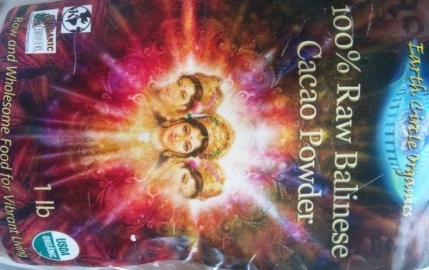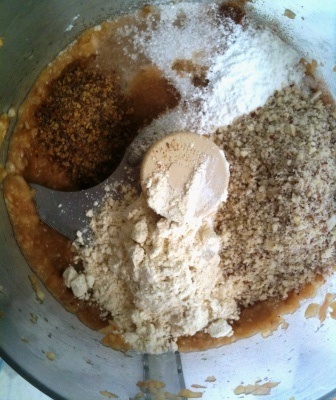It's not easy to shop for foods by glycemic index unless you know what that is. Once you have the ratings you can incorporate them into your shopping list before you leave the house. With this in hand, and soon in your head!, you will be able to make intelligent choices about what is 'healthy'.
The Glycemic Index (GI) is a numerical scale used to indicate how fast and how high a particular food can raise our blood glucose (blood sugar) level. A food with a low GI will typically prompt a moderate rise in blood glucose, while foods with a high GI may cause our blood glucose level to spike above the optimal level.
An awareness of foods' Glycemic Index can help you control your blood sugar levels, and may help you prevent heart disease, improve cholesterol levels, prevent insulin resistance and type-2 diabetes, prevent certain cancers, and achieve or maintain a healthy weight.
Note: A study tracked participants for year and found that overweight people on a low-carb, low-glycemic-index diet lost just as much weight -- 8% of their original weight -- as people on a reduced-fat, high-glycemic-index diet. So as long as you stick with healthy fats (Coconut and Olive oil), your focus should be on the GI of the foods you eat.

Artificial Sweeteners
N/A
Never a Healthy Sugar Alternative
All artificial chemical sweeteners are toxic and can indirectly lead to weight gain, the very reason many people consume them. They should be avoided. In fact, given a choice between high fructose corn syrup and artificial sweeteners, we recommend high fructose corn syrup by far (though it's essentially asking if you should consume poison or worse poison).
Stevia
0
Best Healthy Sugar Alternative
Though it is 200-300 times sweeter than table sugar, stevia is not a sugar. Unlike other popular sweeteners, it has a glycemic index rating of less than 1 and therefore does not feed candida (yeast) or cause any of the numerous other problems associated with sugar consumption. Please note that Stevia and Truvia are not the same thing.
Xylitol
7
Xylitol is a natural sugar alcohol sweetener found in the fibers of fruits and vegetables which can cause bloating, diarrhea, and flatulence with initial consumption. It's said to be safe for pregnant women, and is said to possibly treat ear infections, osteoporosis, respiratory infections, candida, and is it even helps fight cavities. In fact, in Finland, virtually all chewing gum is sweetened with xylitol.
Agave Nectar
15-30 *
Although it has a low-glycemic index, Agave syrup is made from the Blue Agave plant by the extraction and purification of "sap" from the agave plant, which is broken down by natural enzymes into the mono-saccharides (simple sugars): mainly fructose (70-75%) and dextrose (20-26%).
* Agave nectar is 90% fructose. If excessive fructose is causing our obesity, diabetes, and metabolic syndrome epidemic, then agave might be worse than high fructose corn syrup (55% fructose) and worse than table sugar.
Fructose doesn’t stimulate insulin release and as a result, doesn’t stimulate the release of another hormone that makes us feel full. Plus, fructose goes to the liver to be broken down, and there it is converted to fat, which can raise cholesterol and triglycerides.
Furthermore, much of the Agave Syrups sold in stores are made from fructose and have little or no actual Agave sap in them.
Fructose
17
Though fructose has a low glycemic index rating, fructose consumption should be limited. Fructose is linked to heart disease as it raises triglycerides and cholesterol. It is devoid of nutrition. Refined fructose puts an enormous strain on the liver.
Brown Rice Syrup
85
It is not recommended for diabetics, since its sweetness comes from maltose, which is known to cause spikes in blood sugar.
Raw Honey
30 A Healthy Sugar Alternative in moderation
With antioxidants, minerals, vitamins, amino acids, enzymes, carbohydrates, and phytonutrients, raw, unprocessed honey is considered a super-food by many alternative health care practitioners and a remedy for many health ailments. Choose your honey wisely. There is nothing beneficial about processed honey.
A Healthy Sugar Alternative in moderation
With antioxidants, minerals, vitamins, amino acids, enzymes, carbohydrates, and phytonutrients, raw, unprocessed honey is considered a super-food by many alternative health care practitioners and a remedy for many health ailments. Choose your honey wisely. There is nothing beneficial about processed honey.
Coconut Palm Sugar
35
Originally made from the sugary sap of the Palmyra palm , the date palm or sugar date palm (Phoenix sylvestris). It's also made from the sap of coconut palms. With a relatively low glycemic index, Coconut palm sugar is the new rage among health nuts. It's often called "coconut nectar sugar" or "coconut sugar". BUT.. The composition of coconut sugar (also known as gula kelapa, jaggery or gur) obtained from three locations in Indonesia was determined using HPLC. Sucrose was the major component of all samples (70-79%) followed by glucose and fructose (3-9% each).
Apple Juice
40
Fresh apple juice is good for you, though we recommend eating fresh raw whole apples. Concentrated apple juice (sometimes used as a sweetener) is closer to refined sugar than fresh apple juice.
Barley Malt Syrup
42
Barley malt syrup is considered to be one of the healthiest sweeteners in the natural food industry. Barley malt is made by soaking and sprouting barley to make malt, then combining it with more barley and cooking this mixture until the starch is converted to sugar. The mash is then strained and cooked down to syrup or dried into powder.
Amasake
43
This is an ancient, Oriental whole grain sweetener made from cultured brown rice. It has a thick, pudding-like consistency. It's not easy to find in the U.S., but it is a great alternative to refined table sugar.
Sugar Cane Juice
43
Healthy Sugar Alternative in moderation. Sugar cane juice has many nutrients and other beneficial properties and is said by some health practitioners to be almost as medicinal as raw honey. The use of this substance (in moderation of course) has not been associated with any negative side effects or dangerous medical conditions.
Organic Sugar
47
Organic sugar comes from sugar cane grown without the use of chemicals or pesticides. It is usually darker than traditional white sugar because it contains some molasses. (It has not been processed to the degree white sugar is processed).
Maple Syrup
54
Maple syrup is made by boiling sap collected from natural growth maple trees during March & April. It is refined sap and is therefore processed. It has a high glycemic index, and though it is much more nutritious than refined table sugar and high fructose corn syrup, there are better choices.

Evaporated Cane Juice
55
Evaporated cane juice is often considered unrefined sugar, but juicing is a refining process, and evaporating refines further. Though better than turbinado, cane juice (unevaporated) is a better choice as a sweetener.
Black Strap Molasses
55
White refined table sugar is sugar cane with all the nutrition taken out. Black strap molasses is all of that nutrition that was taken away. A quality organic (must be organic!) molasses provides iron, calcium, copper, magnesium, phosphorus, potassium and zinc, and is alkalizing to the body.
Turbinado
65
Turbinado sugar is partially processed sugar, also called raw sugar.
Raw sugar
65
Raw sugar is not actually raw sugar. It is processed, though not as refined as common white table sugar. Therefore, given a choice between raw and white, choose raw. There are many variations of raw sugar with names depending on how refined it is.
Cola (and most other sodas)
70
Though cola has a lower GI ranking then some might expect, there are many other reasons to avoid cola, or any type of soda. There is nothing beneficial to the human body inside a can of soda (not to mention we should avoid drinking out of aluminum cans!).
Corn Syrup
75
Corn syrup has very little nutrition and should be avoided.
Refined, Pasteurized Honey
75
The nutrition is gone, and there is often high fructose corn syrup added to processed honey. Refined pasteurized honey is no better than white table sugar.
Refined Table Sugar
80
Conventionally grown, chemically processed, and striped of all beneficial properties, many health advocates believe that refined sugar is one of the two leading causes (high fructose corn syrup is the other) of nearly every health ailment known to man (or woman or child). Not only does it have a high GI ranking, but it also is extremely acidic to the body causing calcium and other mineral depletion from bones and organs (sugar is alkaline but has a very acidic effect on the body).
High Fructose Corn Syrup
87
Many health advocates believe that high fructose corn syrup and refined sugar are the two biggest contributors to health ailments in our society. High fructose corn syrup is a combination of sucrose and fructose.
Glucose (AKA Dextrose)
100
White bread was the benchmark, but for consistency glucose now holds the rating at 100.
Maltodextrin
150
Foods that have maltodextrin often say "Low Sugar" or "Complex Carbohydrate", but this sweetener should be avoided!
*~*~*~*~*
~ To Your Health! ♥








